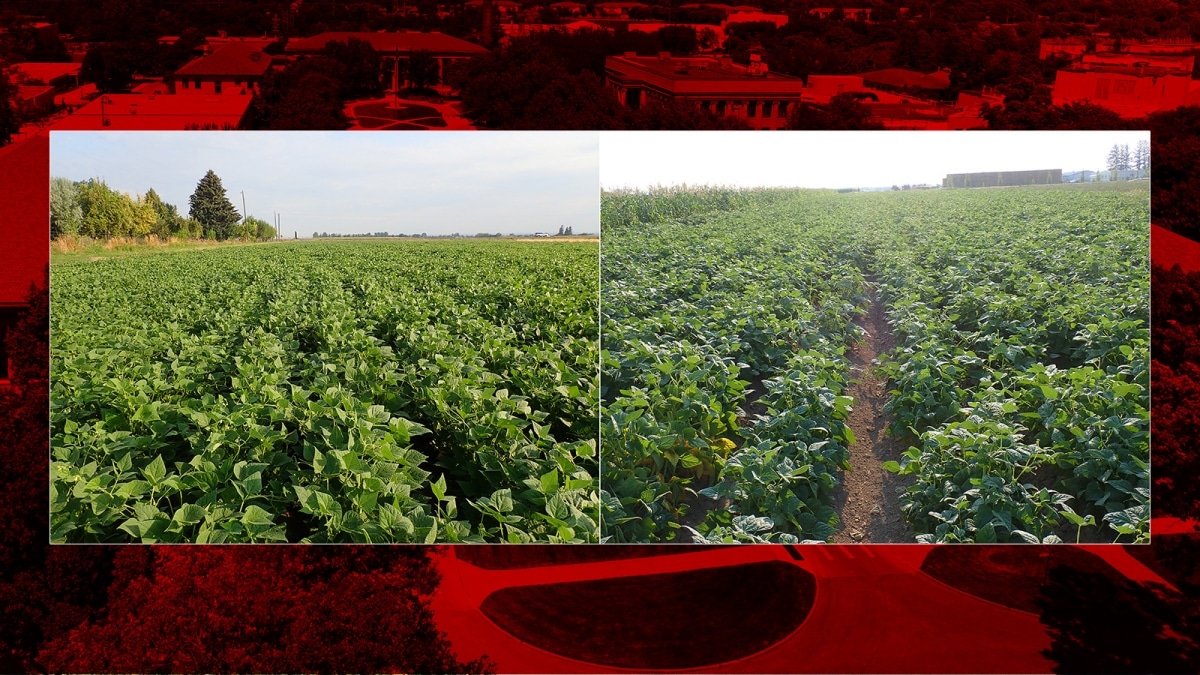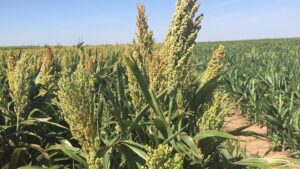The University of Nebraska Dry Bean Breeding Program has announced the development of two new dry edible bean varieties, one a great northern bean suitable for direct harvest and the other a slow-darkening pinto bean variety with longer shelf life. Both new varieties could be available for planting in growers’ fields as early as 2022 or 2023.
The great northern dry bean cultivar White Pearl is adapted for western Nebraska growing conditions, upright plant architecture, high yield, and enhanced resistance to bean rust, common bacterial blight, and bean common mosaic virus. White Pearl’s upright plant architecture makes it suitable for direct harvest, which is a growing trend in the Nebraska dry bean industry. In 2020, 20-25% of the planted area was direct harvested.
Nebraska leads all states in the production of great northern beans, accounting for 75% of the 2020 total U.S. great northern production.
The new pinto variety, Wildcat, is the first slow-darkening pinto bean cultivar released by the UNL Agricultural Research Division, Dry Bean Breeding Program. Wildcat, tested as NE2-17-18, was derived from the single cross of NE2-12-16/SDIP2 made in the winter of 2013 in the greenhouse at the Panhandle Center.
Nebraska ranks second in pinto bean production in the United States, accounting for 13.3% of the 2020 total production. Recently, the U.S. pinto bean industry began shifting toward the development and production of slow-darkening pinto beans because of their longer shelf life and improved seed quality.
For both new varieties, seed is being increased in Idaho, and might be available for planting in growers’ fields in either 2022 or 2023. The Husker Genetics Foundation Seed Program will maintain breeder and foundation seed of White Pearl and Wildcat. White Pearl and Wildcat are available for licensing, and NUtech will be managing the agreements and their compliance.
White Pearl Characteristics
White Pearl was derived from a multiple cross of Panhandle Pride, NE2-06-5, NE1-06-11, Poncho, and Kimberly. All crosses were made in the greenhouse at the Panhandle Center during winter. The first cross of Poncho and Kimberly was initiated in 2008. The final cross of all the lines was made in 2011.
White Pearl combines genetic resistance to numerous pathogens. It has the Ur-3 resistance gene that confers broad-spectrum resistance to many of the known races of the bean rust pathogen, has resistance to the common bacterial blight (CBB) and bean common mosaic potyvirus pathogens.
Seed yield of White Pearl was comparable and slightly higher than other great northern cultivars in on-station trials conducted in Nebraska from 2013-20, and was greater than the high-yielding Matterhorn in regional trials conducted in 2016 and 2017. Seed size (100-seed weight) of White Pearl was larger than that of Marquis, Orion, Gemini, Beryl-R and Aries in trials grown in Nebraska and larger than Matterhorn in regional trials. White Pearl has bright white seed, blooms 46 days after planting, and is a midseason bean, maturing 89 days after planting.
Wildcat Characteristics
The slow-darkening trait is controlled by a single recessive gene. Wildcat combines multiple valuable attributes, including high yield, the slow-darkening trait, and larger seed size than current conventional and slow darkening pintos. Wildcat also combines genetic resistance to numerous pathogens. It has the Ur-11 resistance gene that confers broad-spectrum resistance to all but one of the known races of the bean rust pathogen. It also has resistance to the CBB and bean common mosaic potyvirus pathogens.
Yield of Wildcat was comparable to conventional and slow-darkening pinto bean cultivars grown in Nebraska from 2015-20. During the 2017 Western Regional Bean Trial, 2017 Mid-west Regional Performance Nursery, and 2018 Cooperative Dry Bean Nursery, Wildcat had higher yield than Twin Falls, Nez Perce, Black Foot, Montrose, Buster, ND-Palomino and La Paz at some locations.
Wildcat has white flowers, blooms 46 days after planting, and is a full-season bean, maturing 93 days after planting. Seed size was larger than current conventional and slow darkening pinto beans, making it attractive for international and domestic markets. Wildcat has an indeterminate prostrate growth habit.
Dry Bean Breeding Specialist Carlos Urrea acknowledged the technical support of Eduardo Valentin-Cruzado and Freddy Ortiz; the financial support from the Nebraska Dry Bean Commission; financial support from the Specialty Crop Block Grant Project through the Nebraska Department of Agriculture (for Wildcat); and support from the Hatch Project.













